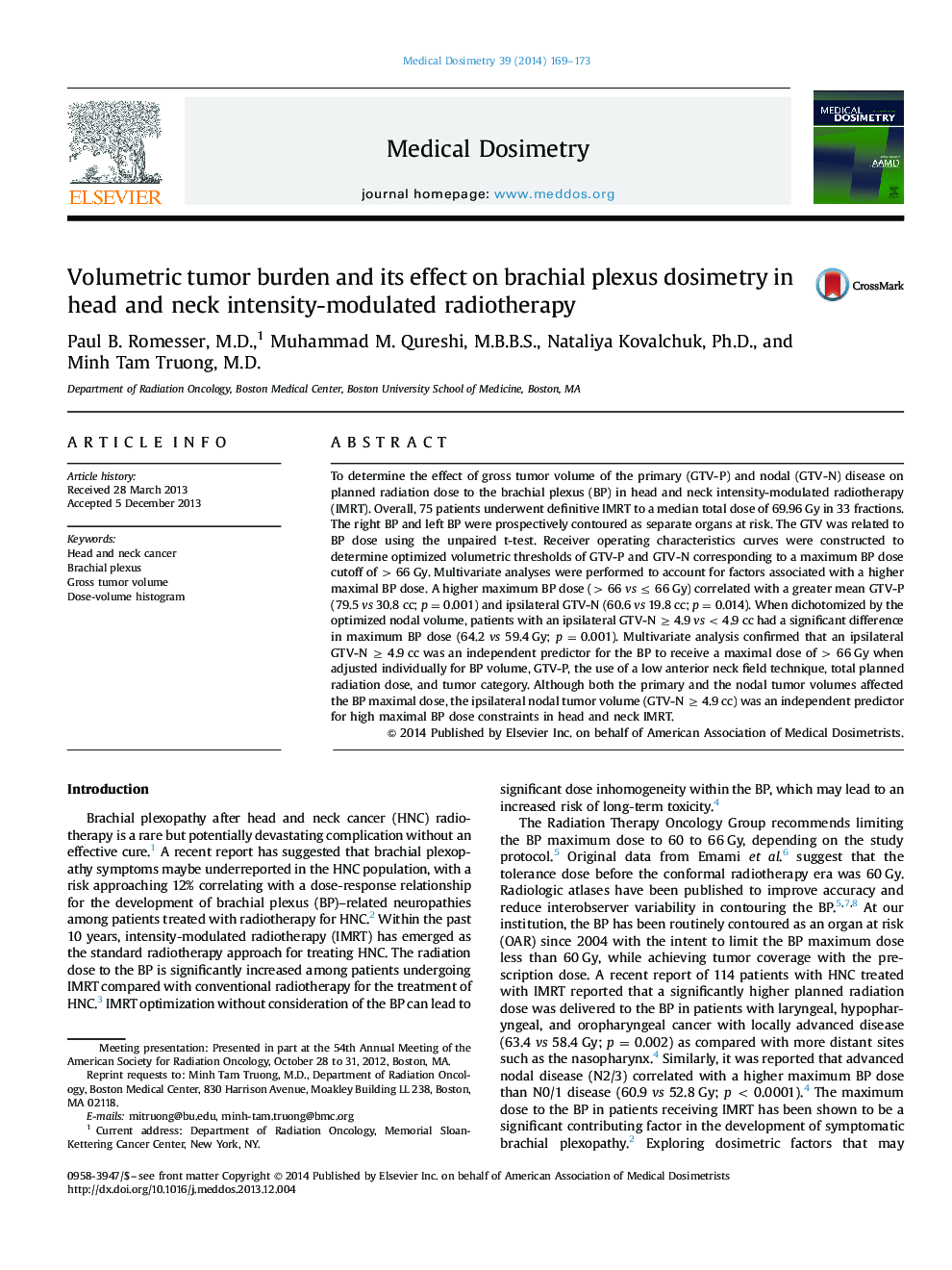| Article ID | Journal | Published Year | Pages | File Type |
|---|---|---|---|---|
| 1881811 | Medical Dosimetry | 2014 | 5 Pages |
Abstract
To determine the effect of gross tumor volume of the primary (GTV-P) and nodal (GTV-N) disease on planned radiation dose to the brachial plexus (BP) in head and neck intensity-modulated radiotherapy (IMRT). Overall, 75 patients underwent definitive IMRT to a median total dose of 69.96 Gy in 33 fractions. The right BP and left BP were prospectively contoured as separate organs at risk. The GTV was related to BP dose using the unpaired t-test. Receiver operating characteristics curves were constructed to determine optimized volumetric thresholds of GTV-P and GTV-N corresponding to a maximum BP dose cutoff of > 66 Gy. Multivariate analyses were performed to account for factors associated with a higher maximal BP dose. A higher maximum BP dose (> 66 vs ⤠66 Gy) correlated with a greater mean GTV-P (79.5 vs 30.8 cc; p = 0.001) and ipsilateral GTV-N (60.6 vs 19.8 cc; p = 0.014). When dichotomized by the optimized nodal volume, patients with an ipsilateral GTV-N ⥠4.9 vs < 4.9 cc had a significant difference in maximum BP dose (64.2 vs 59.4 Gy; p = 0.001). Multivariate analysis confirmed that an ipsilateral GTV-N ⥠4.9 cc was an independent predictor for the BP to receive a maximal dose of > 66 Gy when adjusted individually for BP volume, GTV-P, the use of a low anterior neck field technique, total planned radiation dose, and tumor category. Although both the primary and the nodal tumor volumes affected the BP maximal dose, the ipsilateral nodal tumor volume (GTV-N ⥠4.9 cc) was an independent predictor for high maximal BP dose constraints in head and neck IMRT.
Related Topics
Physical Sciences and Engineering
Physics and Astronomy
Radiation
Authors
Paul B. M.D., Muhammad M. M.B.B.S., Nataliya Ph.D., Minh Tam M.D.,
